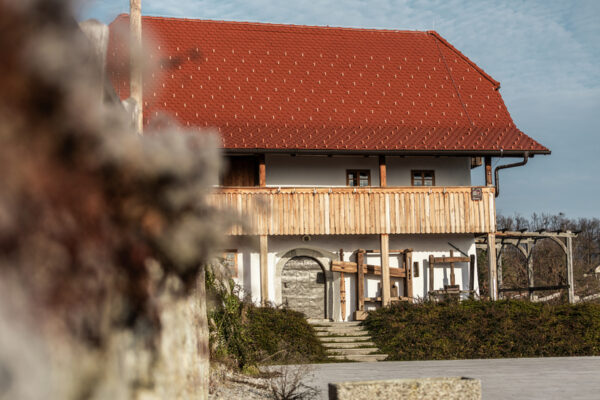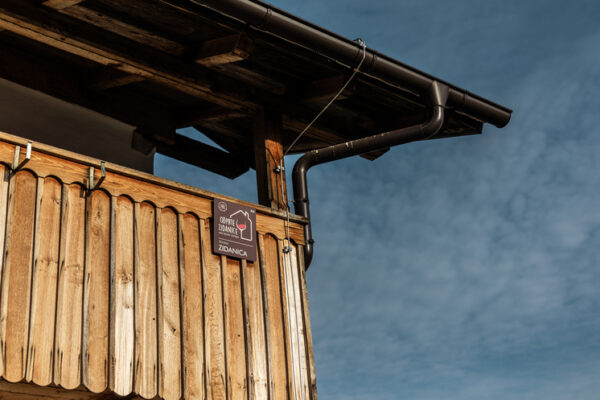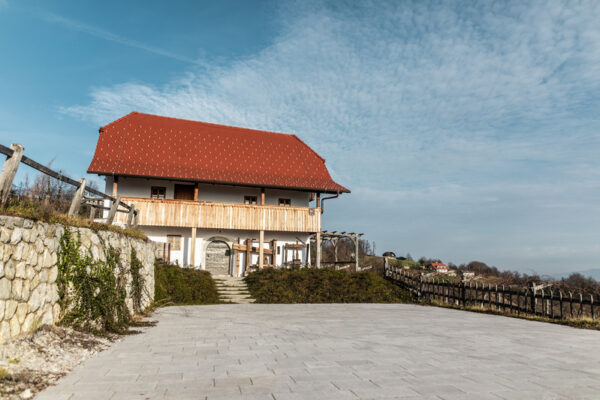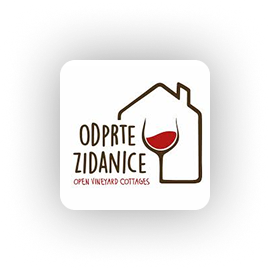School Vineyard Cottage
The School Vineyard Cottage (Šolska zidanica), also known as the Grm Vineyard Cottage, is one of the most interesting and historically rich wine cottages on Trška Gora. Built in the second half of the 19th century as a typical bourgeois cottage, it features a distinctive wooden porch and a two-room living area above the cellar. Today, it is owned by the Grm Novo mesto Estate – Centre for Biotechnology and Tourism, where it plays an important role in the practical education of young viticulturists.
Historical Significance and Restoration
Between 1853 and 1887, the cottage belonged to Jožef Rosina, a well-known lawyer and political activist from Novo Mesto. In 1887, it was purchased by the provincial agricultural school, which relocated to the nearby Grm Castle. The vineyard beside the cottage became the foundation for student education in viticulture, and one of the first experimental wine cellars in Austria was established in the castle’s cellar. In 1909, Professor Bohuslav Skalicky developed the Cviček wine here, which was later presented at a wine exhibition in Prague.
Franc Mlakar was the last vintner at the Grm Vineyard Cottage. From 1928 to 1949, he, together with his wife Terezija and niece, cared for the vineyard and taught students. Besides vineyard duties, he organized formal harvests for the school’s distinguished guests and vigilantly protected the vineyard, especially during pilgrimage events on Trška Gora.
After a period of state ownership and management by the Krka factory, the school Grm took over responsibility again in 2004. The restoration was challenging and took place in three phases, completed in 2016 when the cottage was declared a cultural monument of local importance.
Connection to Tradition
Over the decades, the Grm Vineyard Cottage has preserved its role as a place for education and promotion of viticulture. Today, it hosts the practical part of the school curriculum, where students learn both traditional vineyard techniques and modern wine production methods. The vineyard next to the cottage was restored in a terraced layout and continues to serve as a teaching laboratory.
The cottage retains features characteristic of past eras, such as the wooden porch, attic room, dripstones, and architectural elements typical of bourgeois wine cottages. Two wells are located nearby — one for drinking water and the other for agricultural use. The interior was adapted for vintner life, including a black kitchen, bread oven, and a spacious bedroom that also served guests.







